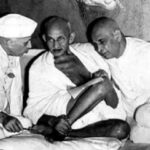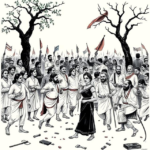Maharana Pratap, the legendary ruler of Mewar, is one of the most revered warriors in Indian history. His courage, commitment to independence, and indomitable spirit have made him a symbol of patriotism and resistance against foreign domination. This blog explores Maharana Pratap’s life, his struggles against the Mughal Empire, and his lasting legacy.
Early Life of Maharana Pratap
Maharana Pratap was born on 9th May 1540 in Kumbhalgarh, Rajasthan, to Rana Udai Singh II and Maharani Jaiwanta Bai. Even as a child, Pratap displayed extraordinary bravery and leadership qualities. Growing up amidst political turmoil and frequent threats from invaders, he was trained in warfare, horse riding, and statecraft.
Pratap belonged to the Sisodia Rajput dynasty, known for its fierce loyalty to the cause of Rajputana’s independence. His upbringing in the rugged terrains of the Aravalli hills shaped him into a fearless warrior, ready to sacrifice everything for the sovereignty of his motherland.
Maharana Pratap’s Coronation
Following the death of Rana Udai Singh in 1572, a power struggle ensued. Despite court conspiracies favoring his younger brother Jagmal, the nobility of Mewar placed their faith in Pratap’s leadership. His coronation marked a new chapter in Mewar’s history, as he vowed never to submit to Mughal rule.
Pratap’s reign began with strengthening the kingdom’s defenses, forming alliances with nearby Rajput rulers, and preparing his army for an inevitable confrontation with the Mughals..
Battle of Haldighati: A Historic Clash
The Battle of Haldighati, fought on 18th June 1576, remains one of the most iconic battles in Indian history. Maharana Pratap, leading a force of 20,000 warriors, faced the mighty Mughal army led by Raja Man Singh, commanding 80,000 soldiers under Emperor Akbar’s orders.
Although heavily outnumbered, Pratap’s guerrilla tactics and strategic prowess inflicted significant damage on the Mughal forces. The battle saw the valiant sacrifice of his loyal horse, Chetak, who carried the injured Maharana to safety before succumbing to his wounds.
Despite losing the battle, Maharana Pratap’s spirit remained unbroken. He retreated to the Aravalli Hills, continuing his resistance through guerrilla warfare..
Struggles and Guerrilla Warfare
After the Battle of Haldighati, Maharana Pratap and his loyal followers faced extreme hardships. The Mewar royal family had to endure life in the forest, often surviving on wild fruits and roots. Pratap’s unwavering resolve inspired his people, who remained loyal despite the dire circumstances.
He continued to launch surprise attacks on Mughal outposts, reclaiming lost territories like Gogunda, Kumbhalgarh, and Udaipur. His guerrilla tactics frustrated the Mughal forces, earning him the title of an “invincible warrior.”
Legacy of Maharana Pratap
Maharana Pratap’s legacy is a testament to his undying commitment to his people and kingdom. He stands as a symbol of courage, sacrifice, and resistance against oppression. His life story is taught in schools across India, inspiring generations to value independence and integrity.
In recognition of his valor, Maharana Pratap Jayanti is celebrated annually, especially in Rajasthan, where he is worshipped as a hero. The majestic Statue of Maharana Pratap in Udaipur and the Haldighati Museum serve as reminders of his glorious past.
Maharana Pratap’s life epitomizes the essence of true heroism. His steadfast determination, despite overwhelming odds, teaches us invaluable lessons about courage, resilience, and patriotism. As India continues to honor its unsung heroes, Maharana Pratap’s story remains a beacon of inspiration, reminding us to stand firm in the face of adversity.
Related posts:
 Valentine’s Day: History, Significance, and Modern Perspective
Valentine’s Day: History, Significance, and Modern Perspective
 Hindu New Year 2025: Significance, History, Traditions, and Celebrations
Hindu New Year 2025: Significance, History, Traditions, and Celebrations
 Sardar Patel – The Unifier of India in the Shadow of Partition
Sardar Patel – The Unifier of India in the Shadow of Partition
 Breaking India: Unveiling Forces Fragmenting the Nation
Breaking India: Unveiling Forces Fragmenting the Nation
 The Necessity of Annihilation of Caste in India: A Path to True Equality
The Necessity of Annihilation of Caste in India: A Path to True Equality
 Was There Any Compulsion on Mahatma Gandhi to Make Jawaharlal Nehru the Prime Minister of India?
Was There Any Compulsion on Mahatma Gandhi to Make Jawaharlal Nehru the Prime Minister of India?
